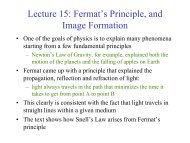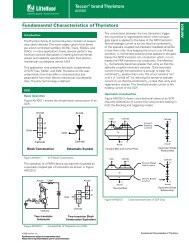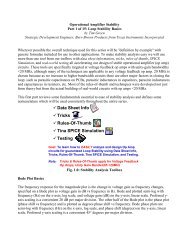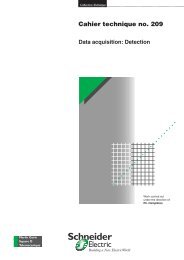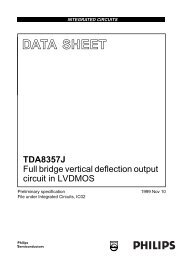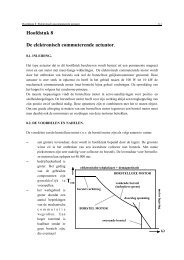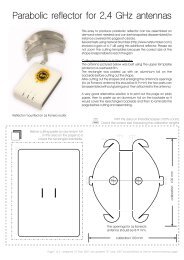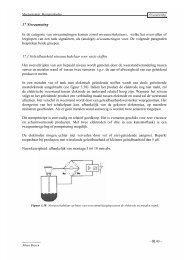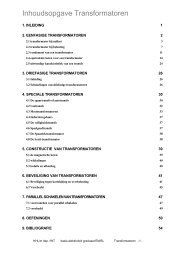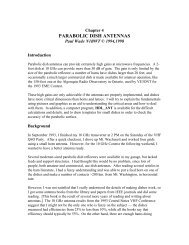DC Machine Armature Winding
DC Machine Armature Winding
DC Machine Armature Winding
Create successful ePaper yourself
Turn your PDF publications into a flip-book with our unique Google optimized e-Paper software.
<strong>DC</strong> <strong>Machine</strong> <strong>Armature</strong> <strong>Winding</strong> (Hadi Saadat)<br />
The <strong>DC</strong> machine armature windings are always of the closed continuous type of double-layer lap<br />
or wave winding. For small machines, the coils are directly wound into the armature slots using<br />
automatic winders. In large machines, the coils are preformed and then inserted into the armature<br />
slots. Each coil consists of a number of turns of wire, each turn taped and insulated from the<br />
other turns and form the rotor slot. Each side of the turn is called a conductor. The number of<br />
conductors on a machine's armature is given by<br />
Z = 2CNc (1)<br />
Where Z = number of conductors on rotor<br />
C = number of coils on rotor<br />
N c = number of turns per coil<br />
Since the voltage generated in the conductor under the South Pole opposite the voltage generated<br />
in the conductor under the North Pole, the coil span is made equal to 180 electrical degrees, i.e.,<br />
one pole pitch. In a 2-pole machine 180 electrical degrees is equal to 180 mechanical degrees,<br />
whereas in a 4-pole machine 180 electrical degrees is equal to 90 mechanical degrees. In general,<br />
the relationship between the electrical angle θ e and mechanical angle θ m is given by<br />
Where P is the number of poles?<br />
P m<br />
θe = θ<br />
(2)<br />
2<br />
The most commonly used winding is a two-layer winding. The number of coils for a two-layer<br />
winding is equal to the number of armature slots. Thus, each armature slot has two sides of two<br />
different coils. In the preformed coils, one side of a coil is placed at the bottom half of a slot and<br />
the other side at the top half. If S is the number of slots in the rotor, the coil pitch is designated<br />
by y is given by<br />
Integer value of S ⎛ ⎞<br />
y = ⎜ ⎟<br />
⎝ P ⎠ (3)<br />
That is if we place one side of the coil in slot m , the other side must be inserted in slot m+ y.<br />
The manner in which the coils are connected together will form the type of armature winding.<br />
Let Ec and I c are the voltage and current per coil. If a is the number of parallel paths between<br />
brushes, then the number of series conductor per parallel path between brushes is Z / a . Hence<br />
the average generated emf and the armature current are given by<br />
Z<br />
E = Ec<br />
a<br />
(4)<br />
I = aI<br />
Simplex Lap <strong>Winding</strong><br />
a c<br />
In one type known as the simplex lap winding the end of one coil is connected to the beginning<br />
of the next coil with the two ends of each coil coming out at adjacent commutator segments. For<br />
1
a progressive lap winding the commutator pitch y c = 1.<br />
A typical coil of Nc<br />
turns for a simplex<br />
lap winding is shown in Figure 1.<br />
In the simplex lap winding the number of parallel path between brushes is equal to the number of<br />
poles, i.e., P= a.<br />
This type of winding is used for low-voltage, high-current applications.<br />
Nc<br />
turns insulated<br />
from each other<br />
1<br />
y coil span <br />
1 pole pitch<br />
1 2<br />
Commutator pitch yc = 1 for simplex lap winding<br />
yc<br />
'<br />
1<br />
l = length of con<br />
Commutator segments<br />
Figure 1 A typical coil for lap winding with y c = 1.<br />
Let us consider a four-pole, two-layer, simplex lap winding with 8 slots. If number of turns per<br />
coil N = 1,<br />
the total number of conductors is Z = 2(1)(8) = 16 . From (3) the coil pitch is<br />
c<br />
8<br />
y = = 2 slots<br />
4<br />
Figure 2 (a) shows the winding connection where the two ends of a coil are connected to<br />
adjacent commutator segments. The coils in each path are connected in series and the winding<br />
close upon itself. The number of parallel path between the brushes and the winding arrangement<br />
can be seen more clearly by the developed diagram of the armature as shown in Figure 2(b). In<br />
the developed view, the winding is cut along the axial length and is laid flat on the paper.<br />
Simplex wave winding<br />
As we have seen in the lap winding, the two ends of a coil are connected to adjacent commutator<br />
segments ( y c = 1).<br />
In the wave winding, the two ends of a coil are connected to the commutator<br />
segments that are approximately 360 electrical degrees apart (i.e., 2-pole pitch). This way all the<br />
coils carrying current in the same direction are connected in series. Therefore, there are only two<br />
parallel paths between the brushes, i.e., a = 2 independent of the number of poles. This type of<br />
winding is used for low-current, high-voltage applications.<br />
2
S<br />
7<br />
'<br />
5<br />
Figure 2(a) A polar-winding diagram of<br />
a 4-pole, 8-coil, lap wound dc machine<br />
c<br />
8<br />
'<br />
6<br />
6<br />
'<br />
4<br />
N<br />
6<br />
5<br />
'<br />
7<br />
7<br />
4<br />
1<br />
5<br />
'<br />
'<br />
'<br />
'<br />
'<br />
'<br />
'<br />
1 7 2 8 3 1 4 2 5 3 6 4 7 5 8<br />
8<br />
3<br />
'<br />
3<br />
b<br />
a<br />
a b<br />
8<br />
Figure 2(b) Developed diagram of a<br />
4-pole, 8-coil, lap wound dc machine<br />
N S<br />
N S<br />
1<br />
2<br />
1 2 3 4 5 6 7 8<br />
3<br />
N<br />
'<br />
8<br />
'<br />
2<br />
2<br />
'<br />
1<br />
4<br />
3<br />
S<br />
'<br />
6<br />
c
To be continued An example for a simplex wave winding will be included.<br />
4



